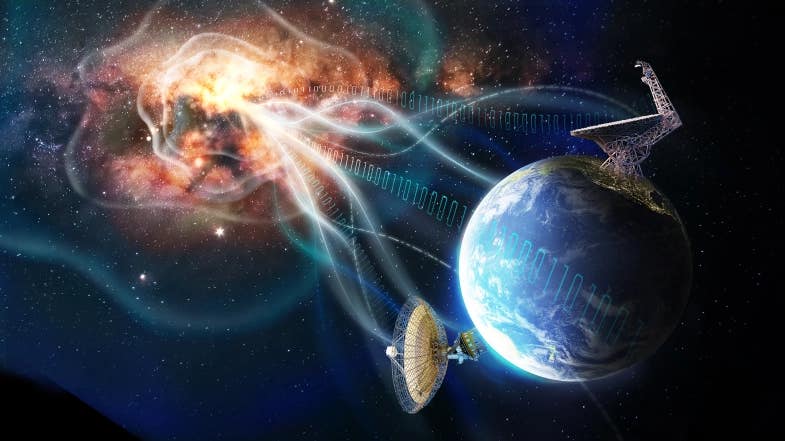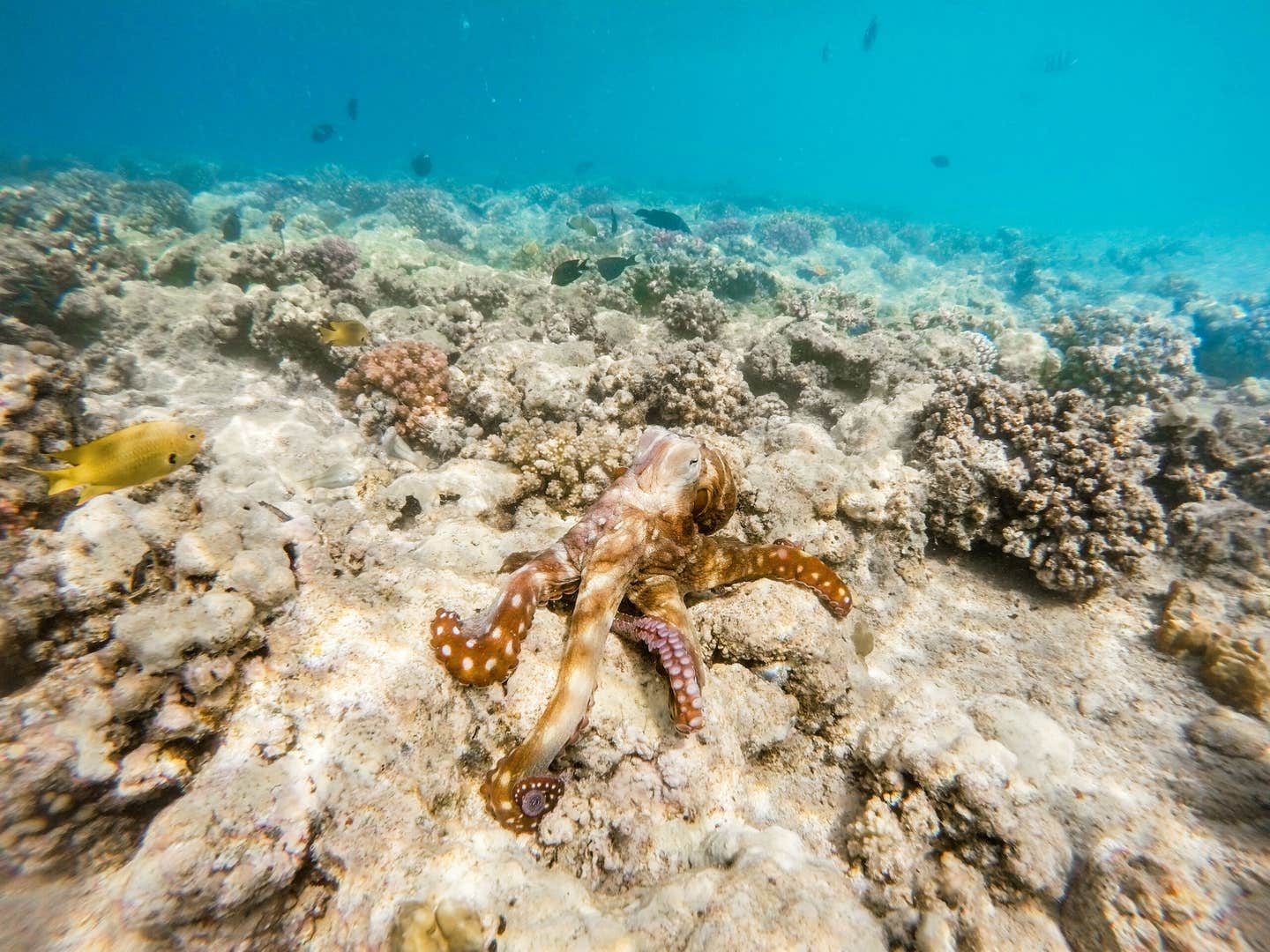New SETI program helps students detect signs of advanced life beyond Earth
The SETI Institute’s ARISE Lab brings space science to community colleges, offering real data, hands-on labs, and telescope access.

SETI expands ARISE to bring space science training to community colleges using real radio telescope data and hands-on labs. (CREDIT: Danielle Futselaar)
In a quiet part of Northern California, where pine trees brush the sky and the hum of giant satellite dishes fills the air, something big is happening in science education. A new wave of college students is getting the chance to explore the universe — not through textbooks, but with real data from a world-class observatory. Thanks to a growing program called ARISE Lab, students and teachers from community colleges are diving deep into the science of space, radio signals, and the search for alien life.
The SETI Institute, which focuses on the scientific search for extraterrestrial intelligence, has expanded this groundbreaking effort. With new support from a grant by the Amateur Radio and Digital Communication Foundation, the ARISE Lab (Access to Radio Astronomy for Inclusion in Science Education) is now reaching even more classrooms across the country.
Making Space Science Hands-On
The main idea behind ARISE is simple: when students get to do science themselves, they understand it better and stay interested longer. "Hands-on experiences are proven to improve student engagement and retention," said Dr. Vishal Gajjar, a radio astronomer who leads the project at the SETI Institute. That’s why ARISE puts real scientific tools directly into students' hands.
The program uses GNU Radio, a free and open-source software that lets users process radio signals. This gives students a way to study actual data from the SETI Institute’s Allen Telescope Array (ATA). The ATA is the first and only radio telescope in the world built just for detecting signs of advanced life beyond Earth — also called technosignatures.
With these tools, students don’t just read about pulsars, spacecraft, or distant stars. They study them. They learn to sort signals, find patterns, and understand how astronomers listen to the sky.
What the ARISE Curriculum Offers
Dr. Gajjar and his team built the ARISE curriculum using something called experiential learning technique, or ELT. This method focuses on learning by doing. Students start with pre-lab reading, move through guided lab work, and then reflect on what they discover.
Related Stories
ARISE includes two types of content: modules and labs. Modules are more complete packages that come with slides, notes, reading materials, lab manuals, and instructor guides. They are designed to be added directly into a science class. Labs, on the other hand, are shorter, standalone activities that can be used by themselves or as part of a larger lesson.
The labs cover a wide range of topics. Students might explore signal modulation — the way information travels through radio waves — or learn how data science applies to astronomy. Each lab has step-by-step instructions that make it easy for both students and teachers to follow.
By linking lessons to the search for extraterrestrial life, ARISE grabs students’ attention. Research shows that this subject sparks more interest than almost any other topic in science. "With ARISE, we’re combining cost-effective tools like GNU Radio with one of the most captivating topics in science — the search for life beyond Earth — to spark curiosity and build skills across STEM disciplines,” Gajjar said.
Real Tools, Real Signals, Real Skills
The ARISE team doesn't just give students data and walk away. They create chances for them to experience what it’s like to work in space science. “Whether it’s detecting a signal from a Mars orbiter or analyzing pulsar data, students are gaining real experience with tools used in both professional astronomy and industries,” said Joel Earwicker, the project’s lead research assistant. “It’s about making science feel real, relevant, and achievable.”
That real-world feeling is what sets ARISE apart. It connects students with data from the Allen Telescope Array, a set of 42 dish antennas located at the Hat Creek Radio Observatory. This array scans the sky daily, looking for faint radio waves that might come from intelligent life in space.
Students learn how to filter out "noise" from human-made signals, track moving sources across the sky, and identify natural phenomena like pulsars — stars that blink like cosmic lighthouses. These skills mirror what professionals do in both astronomy and tech careers, building a direct path from the classroom to the workforce.
Growing the Program in 2025
After the program’s first pilot workshop at Hat Creek in 2024, the results spoke for themselves. Teachers loved it. Students stayed engaged. The SETI Institute decided to grow the effort.
In 2025, ARISE will offer:
- 15 new labs on topics like astronomy, digital communications, and data analysis
- 2 hands-on workshops at Hat Creek to train instructors from community colleges
- On-site lab support at 10 schools to help teachers roll out the new content
The team will also host an in-person workshop for six selected community college teachers from June 25 to June 27, 2025, at Hat Creek. These instructors will get travel and lodging covered. At the workshop, they will visit the telescope site, watch live observations, test out lab activities, and collaborate with other science educators.
This expanded effort aims to bring advanced science training to places that often get left out of big research programs — local community colleges. These schools educate nearly half of all undergraduates in the U.S., and their students often come from backgrounds underrepresented in STEM fields. By targeting these schools, ARISE gives more people a chance to be part of space science. It also helps instructors bring fresh energy to their classes.
Looking Up, Reaching Out
When students see real data from space scrolling across their screens, something clicks. Science becomes more than just facts in a book. It becomes a search — one they can be part of. With ARISE, the SETI Institute is changing how students learn science. Instead of memorizing equations, they explore the universe. Instead of just hoping to understand radio signals, they decode them.
By giving students the tools, data, and support to study space firsthand, ARISE opens doors — to science, to careers, and maybe even to the stars.
Research findings are available online on the SETI Institute website.
Note: The article above provided above by The Brighter Side of News.
Like these kind of feel good stories? Get The Brighter Side of News' newsletter.



